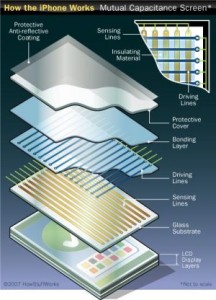Trust and Reputation - How is it achieved?
Analyse and comment on other aspects of online trust and reputation that you feel are worth discussing across any TWO online communities. Consider how design for usability, sociability and sustainablity can help to foster trust and build a reputation among users especially the pragmatists, conservatives and skeptics.
When we say we trust someone or that someone is trustworthy, we implicitly mean that the probability that he will perform an action that is beneficial or at least not detrimental to us is high enough for us to consider engaging in some form of cooperation with him.
Diego Gambetta
http://wiki.uni.lu/secan-lab/Trust+($28)Diego+Gambetta($29).html
Beginning as a closed network for American students, Facebook was perceived as safe by users who networked solely with friends. Opening Facebook up to the rest of the world brought issues that challenged user trust.
Seemingly from other users -
- phishing scams - WALL postings linking to urls mimicking Facebook accounts
- friend spam - people asking to be friends but really wanting you to sign up for other services
Others from within the facility -
- text alerts sent to the wrong people
- linked advertisement systems - broadcasting user purchases made from affiliated sites on their WALL.
- Treatment of personal data such as
- inexplicable loss or disappearance
- inability to delete personal data from deactivated accounts
Discovering these glitches, I questioned participation and wondered why Facebook is still well trusted, was recently announced within Truste’s top 10 sites - www.truste.com and a world user-base topping 300million in Sept.2009.
Both usability and sociability are high on the reasons why.
Facebook is easy to join and use, offering ‘connection’ to others across the world. It caters for fast moving lives, where computer use is ever present, allowing frequent message posting and reciprocation to WALLS - rather than making contact less frequently by other methods.
Facebook has encountered problems, yet the privacy section covers them, stating age limits and user rights and responsibilities - how many people actually read the fine print?
There is also a page at http://www.facebook.com/profile.php?id=555062239&ref=name#/facebook?ref=pf dealing with current software or user problems and there is no fear of media releases such as
http://english.peopledaily.com.cn/90001/90781/90877/6742651.html reporting on Canadian legislation set to change how all personal data will be dealt with on the site.
Acceptance by sites like Truste build Facebook’s reputation and credibility in user eyes, showing that they are working on problems adds to perception of expertise and honesty - “we aren’t perfect but we are doing something about it”. Users also perceive that the majority of experiences are positive and decide to ‘follow’ - taking risks with the site, which they might not have taken otherwise and add constantly to the overall level of trust in the site. Read the rest of this entry »
 with resistive
with resistive Capacitive touchscreens are glass with a thin, transparent metallic coating. They have a built-in electrode pattern charging the screen. When the display is touched, a current drawn to the finger creates a voltage drop. The exact location of the voltage drop/touch is picked up by a controller and transmitted to a computer. Capacitive touch screens are commonly found in interactive building directories and more recently in Apple’s iTouch technology.
Capacitive touchscreens are glass with a thin, transparent metallic coating. They have a built-in electrode pattern charging the screen. When the display is touched, a current drawn to the finger creates a voltage drop. The exact location of the voltage drop/touch is picked up by a controller and transmitted to a computer. Capacitive touch screens are commonly found in interactive building directories and more recently in Apple’s iTouch technology.